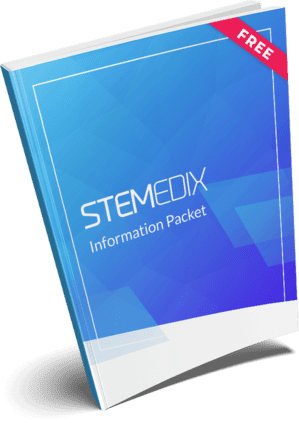
by admin | Sep 6, 2023 | Multiple Sclerosis, Mesenchymal Stem Cells, Regenerative Medicine, Stem Cell Research, Stem Cell Therapy
Multiple sclerosis (MS) is a progressive auto-immune disease that affects the central nervous system (CNS). Currently, it is estimated that nearly 2 million people worldwide are affected by MS.
Characterized by the body attacking the myelin (the protective sheath that covers the nerve fibers), MS causes communication issues between the brain and the rest of the body. As the nerves continue to deteriorate, the condition can cause permanent damage.
Currently, there is no pharmaceutical treatment for MS, only medications that treat the symptoms of the condition.
In the field of regenerative medicine, mesenchymal stem cells (MSCs) have emerged as a candidate that could potentially treat a number of diseases, including MS. Specifically, MSCs have anti-inflammatory effects and have demonstrated the ability to differentiate in order to target the overactivity and self-antigen attacks observed in the development and progression of MS.
As part of this review, Alanazi et al. reviewed a number of clinical trials that have utilized MSCs isolated from a variety of sources, including peripheral blood, bone marrow (BM-MSCs), adipose tissue (AD-MSCs), umbilical cord (UCMSCs), and the placenta, in order to better understand their potential as a treatment option for MS.
An analysis of these clinical trials led the authors of this review to the consensus that MSCs appear effective in inhibiting CD4+ and CD8+ T cell activation, T regulatory cells, and macrophage switch into the auto-immune phenotype.
Further analysis of the specific MSCs used to treat MS by Alanazi et al. indicates that while BM-MSCs, AD-MSCs, and UCMSCs all demonstrate beneficial effects when applied to the treatment of MS, UCMSCs appear to be the best option.
According to the authors, UCMSCs demonstrate faster self-renewal than other MSCs, are able to differentiate into three germ layers, and can accumulate in damaged tissue or inflamed areas. Additionally, UCMSCs are also among the easiest MSCs to source, demonstrate a high concentration of MSCs, are safe and inexpensive, and are not associated with ethical issues.
Based on the information reviewed, Alanazi et al. recommend emphasizing the clinical utility of UCMSCs for regenerative medicine and immunotherapy, including for the treatment of MS.
Source: “Mesenchymal stem cell therapy: A review of clinical trials for multiple ….” 23 Aug. 2022, https://www.ncbi.nlm.nih.gov/pmc/articles/PMC9420954/.

by admin | Aug 9, 2023 | Mesenchymal Stem Cells, Stem Cell Therapy, Wharton's Jelly
Human umbilical cord Wharton’s Jelly derived mesenchymal stem cells (WJ-MSCs) are reported as the most potent cell source of MSCs, however, they remain understudied in comparison to other autologous sources of MSCs.
Mehling et al.’s study aimed to evaluate the safety of WJ-MSC therapy for a range of conditions and administration routines, including intravenous, intrathecal, and intra-articular delivery.
Wharton’s jelly (WJ) is the mucoid connective tissue that surrounds the vessels in the human umbilical cord and provides protection from compression and torsion in response to fetal movement.
According to this study, the use of WJ-MSCs has many advantages over autologous MSCs, including circumventing the pain and healing process of invasive stem cell harvesting from a patient. Additionally, WJ-MSCs offer the highest level of potency for therapeutic benefit and exhibit increased proliferation ability and anti-inflammatory effects.
Additionally, WJ-MSCs have been demonstrated to be safe and effective for many conditions. WJ-MSCs also do not cause or contribute to infusion-related toxicity, treatment-related adverse events, or ectopic tissue formation, even when administered at high dosages.
In this study, Mehling et al. confirm the safety of human allogeneic WJ-MSCs delivered at high doses and through multiple delivery routes (including intravenous (IV), intrathecal (IT), and Intraarticular (IA)).
Specifically, as part of this study, 22 subjects were evaluated for adverse events (AEs) for a period of 6 months following treatments with WJ-MSCs for a range of conditions, including neurological and osteoarthritic indications.
At the conclusion of the 6-month period of evaluation, the study reported an AE rate of 9.3% (3 subjects from the 32 doses administered in this study). The reported AEs consisted of chills and headaches, both transient and mild, and resolving without concern. While both of these AEs (headache and chills) are relatively common reactions to cell administration, 1 of the 3 AEs was deemed related to the administration procedure.
Additionally, blood profiling of 75 markers for health and disease in the subjects of this study demonstrated that WJ-MSC treatment poses no hematological safety concerns.
Considering the minimal occurrences of AEs observed following WJ-MSC therapy administered during this study, the authors support the use of WJ-MSC therapy for various indications in future clinical studies.
Source: “Safety study of cultured human Wharton’s Jelly mesenchymal stem ….” https://www.cellr4.org/wp-content/uploads/sites/2/2022/10/e3332.pdf.

by admin | Aug 2, 2023 | Mesenchymal Stem Cells, Regenerative Medicine, Stem Cell Therapy
Because of its ability to simultaneously activate multiple mechanisms, including paracrine, trophic, immunomodulatory, and differentiation, researchers consider mesenchymal stem cells to be an effective option for stem cell therapy.
After years of active research, bone marrow-derived MSCs (BM-MSCs) have been a prevalent source for MSC-based studies. There is also active research using MSCs from a variety of other sources, including adipose tissue, peripheral and umbilical cord blood, amniotic fluid, skin, dental pulp, synovium, umbilical cord tissue, placental complex, and endometrium.
As part of this review, Arutyunyan et al. review umbilical cord-derived MSCs (UC-MSCs) as a prospective source for MSC-based therapy. More specifically, the authors focus on the potential therapeutic benefits of Wharton’s jelly, the gelatinous substance found in the umbilical cord stroma; of particular interest to researchers is the presence of mesenchymal-derived cells, including stem cells, with the absence of capillaries.
When studied in vitro, researchers found UC-MSCs demonstrated the ability to differentiate into a wide range of cells, including chondrocytes, adipocytes, osteoblasts, odontoblast-like cells, dermal fibroblasts, smooth muscle cells, and somatostatin-producing cells, sweat gland cells, endothelial cells, neuroglia cells, and dopaminergic neurons.
While it’s well known that MSCs produce a variety of bioactive compounds that supply a paracrine mechanism for their therapeutic activity, researchers have learned that UC-MSCs secretomes differ significantly from MSCs from bone marrow and adipose. Specifically, the most significant difference is UC-MSCs’ nearly complete absence of synthesis of the main proangiogenic factor, VEGF-A. UC-MSCs also demonstrate increased production of antiangiogenic factors when compared to BM-MSCs and AT-MSCs.
UC-MSCs have recently demonstrated the ability to transfer their own mitochondria into mitochondrial DNA-depleted cells. This observation has broad implications for the therapeutic potential of UC-MSCs, primarily due to the failure of mitochondria as an initial event in many diseases. In this regard, the authors conclude that the transfer of mitochondria provides a rationale for the therapeutic use of UC-MSCs for ischemic injury or disease linked to mitochondrial dysfunction.
Arutyunyan et al. found recent animal model preclinical studies regarding the use of UC-MSCs for the treatment of different diseases demonstrated promising results. Additionally, clinical studies involving UC-MSCs demonstrated to be safe with no significant side effects other than fever.
While the authors point out concern with the lack of standardized protocols for the isolation and expansion of UC-MSCs and of uniform requirements for the final product. Despite these concerns, the authors also conclude that the results of clinical trials using UC-MSCs are encouraging, particularly for the treatment of autoimmune and endocrine diseases.
Source: “Umbilical Cord as Prospective Source for Mesenchymal Stem Cell ….” 29 Aug. 2016, https://www.hindawi.com/journals/sci/2016/6901286/.

by Stemedix | Jul 31, 2023 | Mesenchymal Stem Cells, Parkinson's Disease, Regenerative Medicine, Stem Cell Therapy
What is Post Stroke and How is it Diagnosed?
“Post-stroke” or “post-stroke period” refers to the period of time following a stroke. A stroke occurs when there is a sudden disruption of blood flow to a part of the brain, leading to brain cell damage and, potentially, the death of brain tissue. The severity and specific consequences of a stroke depend on various factors, such as the type of stroke (ischemic or hemorrhagic) and the location and size of the affected brain area.
The post-stroke period is a critical time for stroke survivors as they begin their recovery and rehabilitation journey. During this period, individuals may experience a range of physical, cognitive, emotional, and social challenges. The post-stroke phase can vary in duration and intensity depending on the extent of brain damage and the effectiveness of treatment and rehabilitation.
Some common aspects and challenges of the post-stroke period include:
Medical stabilization: In the immediate aftermath of a stroke, medical professionals focus on stabilizing the patient, preventing further damage, and addressing any potential complications.
Acute care and rehabilitation: Once the individual’s condition is stable, they may undergo rehabilitation, which may involve physical therapy, occupational therapy, speech therapy, and other specialized treatments to help restore lost functions and improve independence.
Physical recovery: Many stroke survivors experience weakness, paralysis, or difficulty with mobility. Physical therapy aims to help them regain strength, balance, and coordination.
Cognitive recovery: Depending on the area of the brain affected, stroke survivors may experience difficulties with memory, attention, language, and problem-solving. Cognitive rehabilitation can assist in addressing these issues.
Emotional and psychological support: Stroke can have significant emotional and psychological impacts. Depression, anxiety, and frustration are not uncommon during the post-stroke period.
Social reintegration: Stroke survivors may face challenges in reintegrating into their communities and resuming their daily activities. Support from family, friends, and support groups can be essential during this phase.
Long-term management: For some individuals, the effects of a stroke may be permanent, necessitating ongoing care and management of any residual disabilities or health issues.
The post-stroke period is highly individual, and recovery outcomes can vary widely from person to person. Early intervention, rehabilitation, and ongoing support play vital roles in improving the quality of life for stroke survivors.
Diagnosing a stroke typically involves a combination of clinical evaluation, medical history assessment, and imaging tests. Rapid and accurate diagnosis is crucial because time is of the essence when it comes to stroke treatment.
The faster a stroke is diagnosed and treated, the better the chances of minimizing brain damage and improving outcomes.
What Are The Different Types of Stroke?
There are two main types of strokes: ischemic stroke and hemorrhagic stroke. Each type has different underlying causes:
Ischemic Stroke:
Ischemic strokes account for about 85% of all strokes and occur when there is a blockage or narrowing of a blood vessel supplying blood to the brain. This blockage can be due to a blood clot (thrombus) that forms within a blood vessel in the brain (cerebral thrombosis) or elsewhere in the body and travels to the brain (cerebral embolism).
Common risk factors for ischemic stroke include atherosclerosis (the buildup of fatty deposits in the blood vessels), high blood pressure (hypertension), diabetes, high cholesterol levels, smoking, and certain heart conditions such as atrial fibrillation.
Hemorrhagic Stroke:
Hemorrhagic strokes occur when a blood vessel in the brain ruptures, causing bleeding into or around the brain tissue. The bleeding puts pressure on brain cells and can damage them.
The two main types of hemorrhagic stroke are intracerebral hemorrhage (bleeding within the brain) and subarachnoid hemorrhage (bleeding into the space between the brain and the thin tissues that cover it).
Hypertension is a significant risk factor for hemorrhagic stroke, as it can weaken blood vessel walls over time. Other risk factors include brain aneurysms, arteriovenous malformations (AVMs), and certain blood-thinning medications.
How Can I Avoid a Potential Stroke?
It’s important to note that certain lifestyle factors and medical conditions can increase the risk of stroke. These include:
- Sedentary lifestyle
- Poor diet (high in saturated fats, salt, and processed foods)
- Obesity
- Excessive alcohol consumption
- Illicit drug use, especially cocaine and amphetamines
- Heart disease
- Family history of stroke or cardiovascular disease
- Age (stroke risk increases with age)
- Gender (men have a slightly higher risk)
- Race and ethnicity (some groups, such as African Americans and Hispanics, have higher stroke risk)
Managing risk factors through lifestyle changes and medical treatment can significantly reduce the likelihood of experiencing a stroke.
How Do You Know If You Are Having or Have Had a Stroke?
If you suspect someone is having a stroke or experience symptoms yourself, it’s crucial to seek immediate medical attention as prompt treatment can minimize brain damage and improve outcomes. Remember, “FAST” is a simple way to remember the most common symptoms of a stroke:
F – Face drooping
A – Arm weakness
S – Speech difficulty
T – Time to call emergency services.
Recognizing the symptoms of a stroke is crucial because immediate medical attention can greatly improve the chances of minimizing brain damage and improving outcomes. The symptoms of a stroke can vary depending on the type of stroke (ischemic or hemorrhagic) and the part of the brain affected.
Here are some common signs and symptoms of a stroke:
Sudden numbness or weakness: You may experience sudden numbness or weakness in the face, arm, or leg, typically affecting one side of the body. A common indicator is drooping on one side of the face when trying to smile.
Trouble speaking or understanding speech: You might have difficulty speaking coherently or understanding what others are saying. Your speech may become slurred or difficult to comprehend.
Confusion or trouble with comprehension: You may feel confused, disoriented, or have difficulty understanding simple instructions or questions.
Sudden severe headache: A sudden, severe headache that is different from any previous headaches you’ve experienced may be a warning sign of a stroke, especially if it’s accompanied by other symptoms.
Trouble with vision: You may experience sudden blurred or double vision or have trouble seeing out of one or both eyes.
Dizziness or loss of balance: You may feel dizzy, lightheaded, or have trouble maintaining your balance, leading to difficulty walking or coordination problems.
hemorrhagic strokes) to prevent further damage to the brain. Rehabilitation and support following a stroke are also essential for recovery and regaining function.
What Treatments Are There for Post Stroke Care?
Post-stroke care focuses on the rehabilitation and management of stroke survivors to improve their physical, cognitive, emotional, and social functioning. The specific treatments for post-stroke care depend on the individual’s needs and the extent of the stroke’s impact. Here are some common components of post-stroke care and treatments:
- Physical therapy
- Occupational therapy
- Speech therapy
- Cognitive rehabilitation
- Emotional support and counseling
- Medications
- Pain management
- Assistive devices
- Nutritional support
- Social and vocational support
Post-stroke care is often a multidisciplinary approach, involving a team of healthcare professionals working together to develop a personalized treatment plan. The goal is to maximize the individual’s functional recovery, promote independence, and enhance their overall quality of life after a stroke. As each stroke survivor’s situation is unique, the treatment plan will be tailored to their specific needs and abilities. Regular follow-up appointments and ongoing support are essential components of post-stroke care to monitor progress and adjust treatment as necessary.
Regenerative Medicine for Post Stroke Management
Regenerative medicine, also known as stem cell therapy, is a cutting-edge field of medicine that focuses on harnessing the regenerative capabilities of stem cells to treat various medical conditions and injuries, including post-stroke care.
Mesenchymal stem cells (MSCs) are unique cells that have the ability to differentiate into different cell types and self-renew, meaning they can produce more stem cells. MSCs are a type of adult stem cell found in various tissues, such as bone marrow and adipose (fat) tissue. They have the unique ability to differentiate into different cell types and secrete bioactive molecules that can promote tissue repair and modulate the immune response.
In the context of post-stroke care, MSC therapy aims to harness the regenerative and immunomodulatory properties of these stem cells to potentially enhance neurological recovery and reduce post-stroke complications.
Several preclinical studies and early-phase clinical trials have investigated the safety and potential benefits of MSC therapy for stroke. Here are some potential ways MSCs might exert beneficial effects in post-stroke patients:
- Neuroprotection: MSCs have been shown to secrete factors that protect neurons from further damage and promote cell survival in animal models of stroke.
- Anti-inflammatory effects: After a stroke, inflammation in the brain can exacerbate damage. MSCs can modulate the immune response, reducing harmful inflammation and promoting a more favorable environment for recovery.
- Angiogenesis: MSCs can support the formation of new blood vessels (angiogenesis) in damaged brain tissue, improving blood flow and oxygen supply to the affected areas.
- Neuroplasticity: MSCs may help enhance brain plasticity, which is the brain’s ability to reorganize and form new neural connections, potentially aiding recovery and functional improvements.
If you or someone you know is interested in exploring this alternative medicine, work with a regenerative medicine specialist who can help provide detailed information about the options available to them.

by Stemedix | Jul 28, 2023 | Mesenchymal Stem Cells, Crohn's Disease, Stem Cell Therapy
According to the CDC, an estimated 3.1 million adults (1.3%) in the United States have been diagnosed with inflammatory bowel disease (IBD), which includes Crohn’s disease (CD) and ulcerative colitis.
Characterized by abdominal pain, severe diarrhea, fatigue, weight loss, and malnutrition, CD is thought to be the result of swelling and inflammation of the tissue of the digestive tract.
To date, there is not a clearly prescribed method for the treatment or prevention of CD. However, recently, researchers have found stem cells to be a promising treatment option, primarily for the observed ability to regulate immunity, repair injury, and control inflammation.
Building on the positive findings of previous studies that have used autologous stem cells or adipose-derived stem cells to treat CD and its associated complications, Zhang et al.’s randomized controlled clinical trial examines the use of umbilical cord mesenchymal stem cells (UC-MSCs) as a treatment for CD.
This study followed 82 patients who had been diagnosed with CD and had received steroid maintenance therapy for more than 6 months. Half of the participants were randomly assigned to receive a series of four peripheral intravenous infusions of UC-MCSs/kg administered over the course of a four-week period. Then, by using the Crohn’s disease activity index (CDAI) Harvey-Bradshaw Index (HBI), and corticosteroid dosage, participants in both the control and experimental group were followed up with over a 12-month period.
At the conclusion of this study, Zhang et al. found that the group receiving umbilical cord mesenchymal stem cells infusion experienced a significant decrease in the required dosage of corticosteroid dosage and a significant improvement in the overall condition of the patients. These findings led the authors to conclude that UC-MSCs can attenuate immune malfunction in patients with CD. Considering these findings, the authors suggest that the mechanisms of UC-MSC efficacy in CD be elucidated to better understand the precise selection of patients who receive this specific stem-cell treatment in the future.
The authors point out that, while the specific mechanisms of alleviating CD by UC-MSCs remain obscure, it is suggested that the downregulation of proinflammatory cytokines serves a beneficial role in the process.
The authors also raise concerns over the safety of the clinical application of stem cells in this application, highlighting conflicting findings as to the safety of the process. Considering the prevalence of stem cells’ ability to regulate and suppress immunity in other studies, Zhang et al. infer that the patient infections observed during their trial were associated with immunosuppression by stem cells.
While the study suggested that the peripheral infusion of UC-MSCs was convenient and safe, the authors point out that there was little distribution of UC-MSCs in the intestinal tissue and risk of cells being retained in the pulmonary capillaries. As a result, the authors call for future studies comparing the efficacy of interventional infusion into the inferior mesenteric artery to that of peripheral infusion. To know more about mesenchymal stem cell treatment for Crohn’s disease visit Stemedix website and read more related article.

by admin | Jul 26, 2023 | Mesenchymal Stem Cells, Extracellular Vesicles, Regenerative Medicine, Stem Cell Therapy
Researchers continue to tout the potential of mesenchymal stem cells (MSCs) as an evolving approach for the repair of damaged tissue or lost cells.
Specifically, the ability of MSCs to differentiate and secrete beneficial factors and vesicles is believed to play the most influential role in the regeneration of injured tissues and cells affected by various diseases.
Recently, research into the regenerative potential of MSCs has focused on the extracellular vesicles (EVs) secreted by MSCs as an emerging and potential non-cellular therapeutic approach for healing or repairing injured or damaged tissue.
MSC-derived EVs (MSC-EVs), or cell-free therapies, in contrast to treatments based on whole cells, are easier to manage and safer due to lower amounts of membrane-bound proteins such as MHC molecules and their inability to directly form tumors.
In this review, Keshtkar et al. discuss and describe the extracellular vesicles released by MSCs and their therapeutic potential for addressing different disease models.
These EVs are membrane-packed vesicles that are secreted by a variety of cell types and found in a variety of physiological fluids. In addition to MSCs, EVs are also secreted by T cells, B cells, dendritic cells, platelets, mast cells, epithelial cells, endothelial cells, neuronal cells, cancerous cells, and embryonic cells. EVs are also found in urine, blood, breast milk, saliva, cerebrospinal fluid, synovial fluid, and amniotic fluid.
EVs have repeatedly demonstrated that they perform an important role in cell-to-cell communication and have been implicated in a number of important processes, including the immune response, homeostasis maintenance, coagulation, and inflammation.
Several studies have explored the use of MSC- EVs as therapeutic treatment options for kidney disease, liver disease, cardiovascular disease, and neurological disease. The authors of this review report the beneficial therapeutic effects of MSC-EVs in each of the disease models listed above, which include a significant reduction in inflammation, improved angiogenesis, reduced oxidative stress, the suppression of fibrosis, and increased cell proliferation.
Keshtkar et al. conclude that EVs can be easily isolated from MSCs of various origins and can be transferred to target cells to introduce therapeutic effects that include the regeneration of tissue and suppression of inflammation. Additionally, the authors point out that EVs could be an effective, safe therapeutic option.
Considering the potential therapeutic benefits of MSC-EV regenerative therapy, the authors suggest standardizing methods for EV isolation, characterization, and administration as ways to provide safe, effective, and powerful new therapies based on MSC-EVs.
Source: “Mesenchymal stem cell-derived extracellular vesicles – NCBI.” 9 Mar. 2018, https://www.ncbi.nlm.nih.gov/pmc/articles/PMC5845209/.
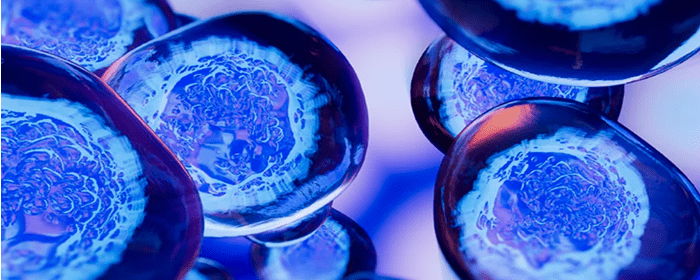

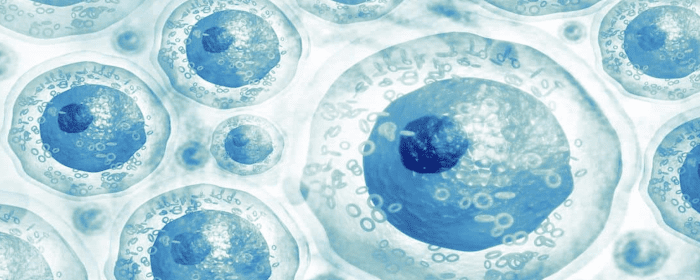
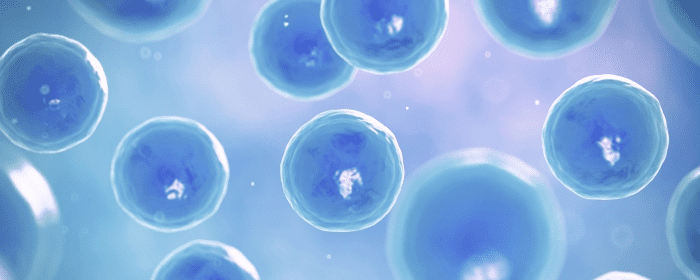


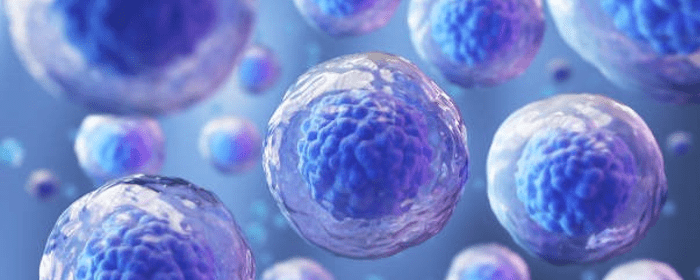
 St. Petersburg, Florida
St. Petersburg, Florida
